#Chang'e (嫦娥)
Explore tagged Tumblr posts
Text

Chang'e (@yoku-yukihime 's Eternal Enemy)
36 notes
·
View notes
Text

Chang'e.
#chinese mythology#Chang'e#moon goddess#嫦娥#Heng'e#姮娥#chinese folk religion#buddhism#chinese buddhism#confusianism#taoism
5 notes
·
View notes
Text
Chang'e (2010) 嫦娥





Director: Liang Kaicheng Screenwriter: Wang Hong Starring: Huang Jue / Yao Di / Ming Dao / Wang Ziwen / Ren Donglin / Wei Qianxiang / Gao Baobao / Zhao Jing Genre: Romance / Fantasy / Costume Country/Region of Production: Mainland China Language: Mandarin Chinese Date: 2010-10-16 (Mainland China) Number of episodes: 40 Also known as: Chang'e Flying to the Moon / 嫦娥奔月 Type: Crossover
Summary:
The story of "Chang'e" takes place before she became a fairy. As a mortal, Chang'e is lively, active, outgoing and cheerful. She is engaged to Wu Gang, played by Ming Dao, but has no feelings for him. She is in love with Hou Yi (played by Huang Jue). Wu Gang likes Chang'e but cannot express it. Unfortunately, the Jade Rabbit, who was saved by Wu Gang, loves Wu Gang... The four of them keep going around in circles in this tangled relationship. In the end, Chang'e flies to the moon to save Hou Yi. The Jade Rabbit stays with her and Wu Gang also comes to the Moon Palace for his beloved...
Source: https://tv-1.chinesemov.com/tv/2010/Change
Link: N/A
#Chang'e#嫦娥#jttw media#jttw television#zhu bajie#jade rabbit#television#live action#crossover#cameo#Wu Gang#Houyi
6 notes
·
View notes
Text
Chang'e & Hou Yi's first meeting
Originally, Chang'e 嫦娥 was called Heng'e 姮娥, but her name was changed to avoid sharing the name of the Han Emperor Liu Heng 劉恆. She is often portrayed as originally human (so she might have had another name) Chang'e is used as a title/rank for moon goddesses.
Yinglong: "You wanna talk to her?" Hou Yi: "Yes!" Yinglong: "Go on." Yinglong: "Hou Yi?" Hou Yi: "Yes?" Yinglong: "Don't come on too strong" [Hou Yi approaches Heng'e] Hou Yi: "Come home with me!" [Yinglong facepalms]
Heng'e: "Who are you?" Hou Yi: "The man who's gonna marry you"
#incorrect quotes#source: hadestown#ying long#ao bing zhuan#aobingzhuan#headcanons#headcanon#black myth new gods#black myth new gods au#nezha reborn#new gods#new gods: nezha reborn#new gods nezha reborn#应龙#chang'e#houyi#嫦娥#后羿#jttw media
3 notes
·
View notes
Text
April 20, Beijing, China, National Museum of China/中国国家博物馆 (Part 1 - Dehua white porcelain exhibition/德化白瓷展):
Aaand finally, the National Museum of China/中国国家博物馆! I was lucky enough to see the famed Dehua white porcelain exhibition/德化白瓷展 here. Some of you may recognize some of these pieces already, since pictures and shorts of them have been circulating online way before I went on this trip, but there are many many other pieces too. The pieces I post here are only a small portion of the entire exhibition, so if you ever get a chance to see the exhibition elsewhere in person, don't hesitate. This stuff is amazing.
First up is one of the two that has been gaining popularity online, the piece named 神话 or "Legend".

The first time I saw a porcelain piece like this, I thought that the clothing part was made with paper? But no, the light fabric of the clothing, the hair, it's all porcelain. Keep in mind when looking through these pictures: every part of every piece is porcelain.
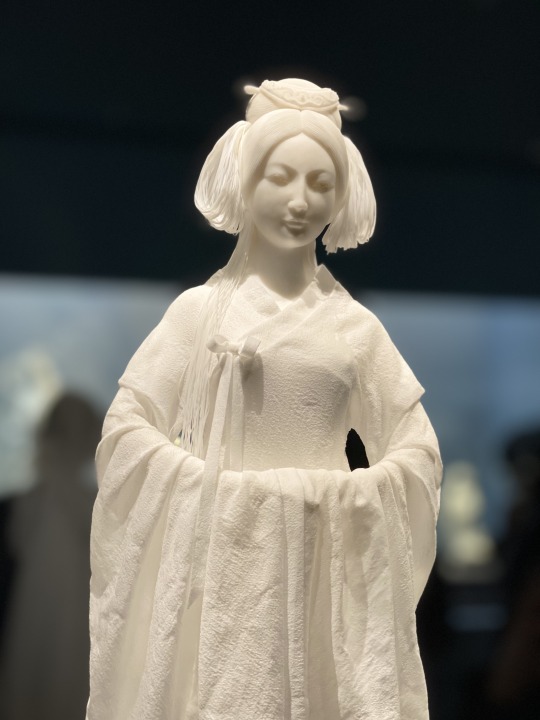
This piece is the other one that was becoming popular, the piece named simply 纸, or "Paper". If you don't look up close and see the glossy surface, you can't tell it's actually porcelain. I cannot for the life of me imagine the kind of magic that was used to turn clay into this
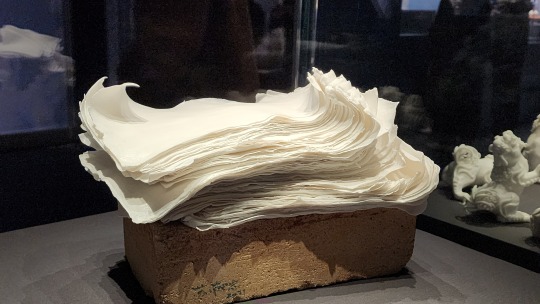
Anyway, this is a good point to introduce Dehua porcelain a little bit. Dehua porcelain is a regional specialty of Dehua/德化, which is located in Fujian province, and is known for its expressiveness and white color. For this reason it's also known in the West as "Blanc de Chine" (French: "white of China"), and this should be the reason why this exhibition is named 中国白, which basically means the same thing. The history of Dehua porcelain goes back to Song dynasty (960 - 1279), and it is still being produced today. Many of the pieces I'm posting here are modern pieces.

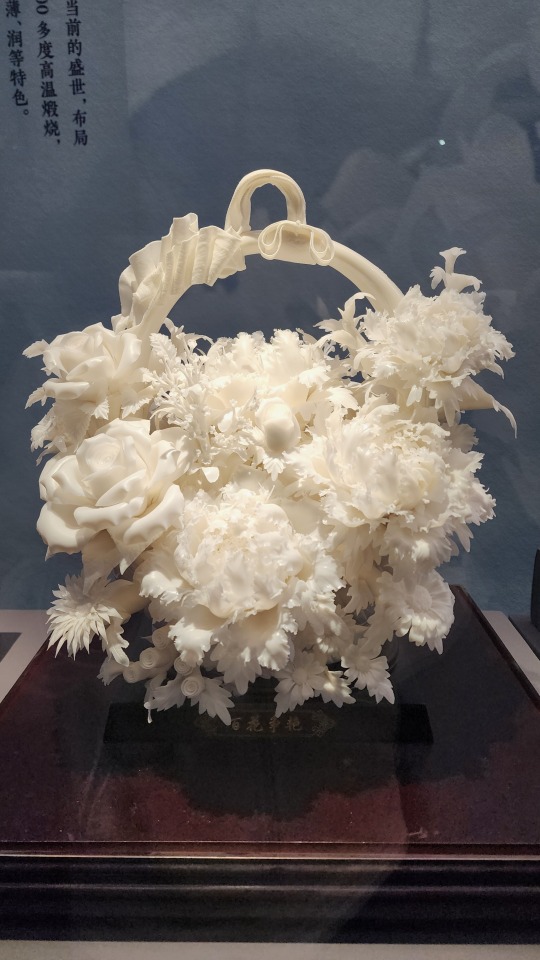
But Dehua white porcelain can be colored too (I imagine the color must be painted on later, because the white comes from the clay itself), and when it is colored, it looks like it came right out of a painting

This piece is especially amazing to me. Look at the texture, look at those details. Zoom in and you will find that there are actually a bunch of porcelain ants on this porcelain tree stump. Porcelain ants. I never expected to use porcelain as an adjective when describing ants. Wtf. It's like a manifestation of a scene from an older animated movie.
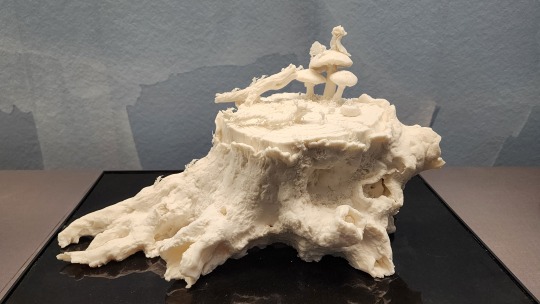
Peanuts are called 花生 in Chinese, which literally means "flower grow", and because it also has a long shelf life, it symbolizes longevity and a happy marriage. Also a fun fact: because Watson of Sherlock Holmes is usually phoenetically translated as 华生 (huá shēng) in Chinese and sounds similar to 花生 (huā shēng), you will find that many in the Chinese SH fandom refers to Watson as "peanut".

This piece is titled 春色满园, or "garden filled with spring scenery". This is also a common 4-character word used to describe gardens in spring. I'm guessing the figure depicted here is one of the flower gods. It is one of my personal favorites because of its superb depiction of movement, it's as if the flower god will really fly away on clouds at any moment

More depictions of traditional Chinese deities, specifically Chang'e/嫦娥, the moon goddess. That moon rabbit is too cute.


Depictions of what I'm assuming is the Four Heavenly Kings/四大天王, based on the items they are holding. The Four Heavenly Kings are Buddhist deities.

Look at her clothing! That porcelain is so thin it's almost see-through! Also is it depicting Li Qingzhao/李清照, the famous female poet from Song dynasty? She does have a famous ci poem that's about paddling a boat in a lake full of lotuses while drunk

The piece titled 锦绣前程, or "future as vibrant and prosperous as silk brocade". This is also a common 4-character word used in well wishing. The figure in this piece is holding a xiuqiu/绣球, a ball made of silk, which was usually seen as a token of love


Somewhat more modern-themed pieces:
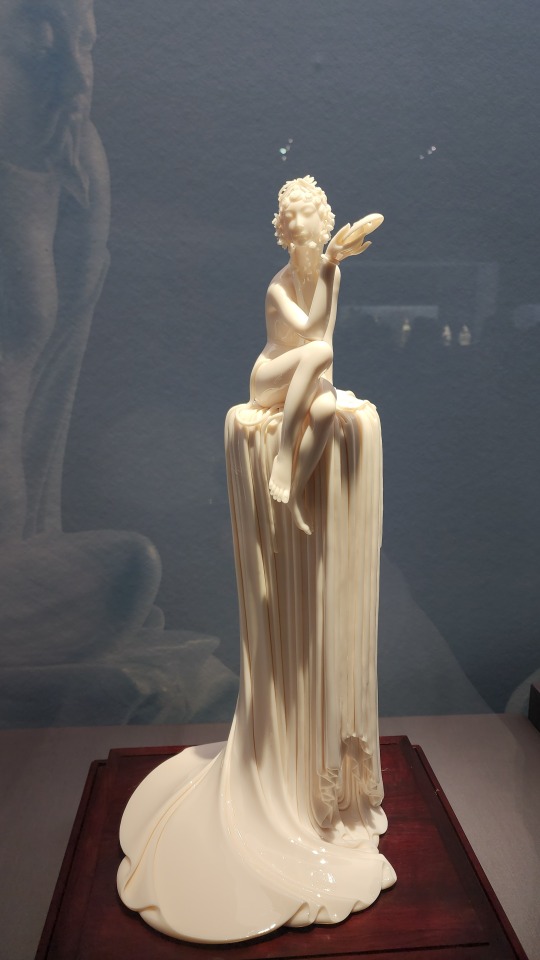

Among the hundreds of amazing pieces, this one caught my attention for its unique texture. When everyone else was trying to turn the clay into these thin sheets representing fabric or paper or flower petals, this artist took the noodle approach. Not many visitors seemed to like it, but I think it's pretty cool

Piece titled 运势如虹, or "fortune like the rainbow", also a 4-character word used in well wishing. Traditionally horses symbolize vitality and success, hence why many people use the words 马到成功 ("horse's arrival brings success") and 龙马精神 ("vitality of dragons and horses") in well wishes during Year of the Horse

Stay tuned for Part 2 of the Dehua white porcelain exhibition!
#2024 china#beijing#china#national museum of china#dehua porcelain#blanc de chine#porcelain#chinese art#chinese culture#art#culture
4K notes
·
View notes
Text
Beauties in 1986 chinese drama Journey to the West西游记
yutujing玉兔精 jade rabbit spirit
zhizhujing蜘蛛精 spider spirit
chang'e嫦娥 moon goddess
jin bi bai mao shu jing金鼻白毛鼠精 Golden nosed white haired mouse spirit
nv er guo guo wang女儿国国王 The Queen of Women's Kingdom
#china#fashion#chinese fashion#yutujing's attire is indian fashion because she disguised herself as an Indian princess#journey to the west#jttw#sun wukong#yutujing is my fave#she is so bunny vibe#she also played the real indian princess#She has excellent acting skills#The real and fake princesses are totally different#also i love the mouse spirit she's just so charming#Many of the spirits in jttw have deep backgrounds#they are all dependents or mounts of Heavenly Immortals#For example#this Mouse Spirit#she has a very high position in the Heavenly Court because she is the adopted daughter of Pagoda-bearing Heavenly King#Nezha's righteous sister#and she is so beautiful that in the end#Buddha couldn't bear to really punish her
275 notes
·
View notes
Text
The Past Life Biography of Zhu Bajie
This is my new article analyzing a poem that reveals details about Zhu Bajie's past life as a human and rise to godhood via internal alchemy. It also discusses details about his current life prior to the quest to India.

A Taiwanese stamp reading, "Drunkenly playing Chang'e“ (Zuixi Chang‘e, 醉戲嫦娥).
#Zhu Bajie#Zhu Wuneng#Zhu Ganglie#Pigsy#Zhu Eight Rules#Pig of Eight Prohibitions#Mr. Pigsy#Journey to the West#JTTW#Lego Monkie Kid#Internal alchemy#immortality#godhood
42 notes
·
View notes
Text
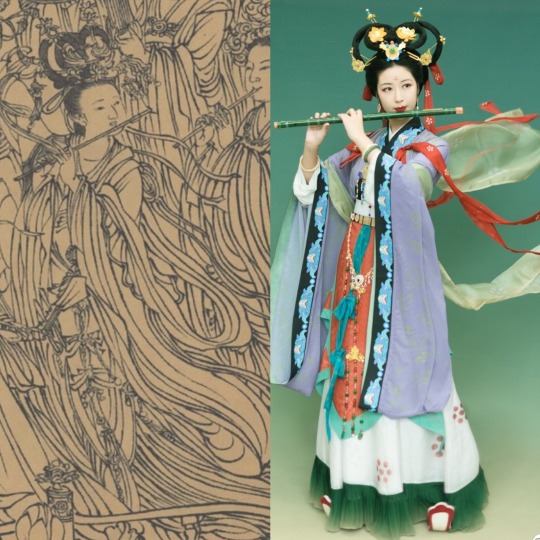

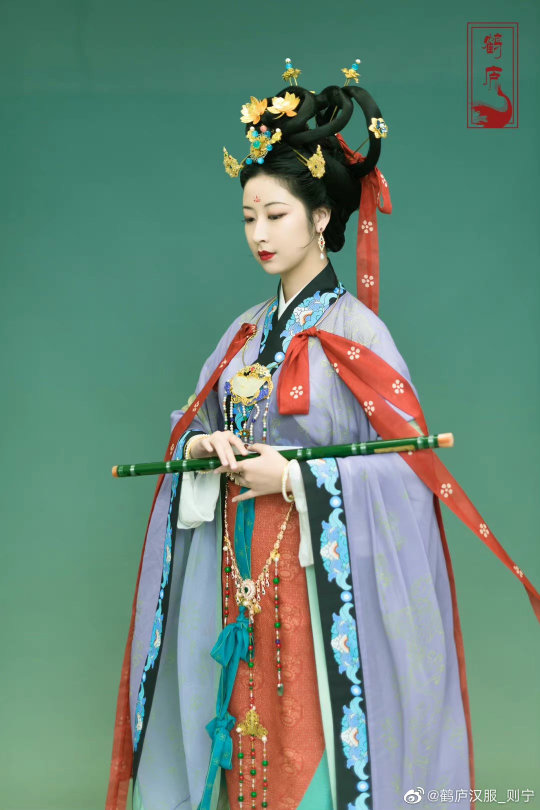
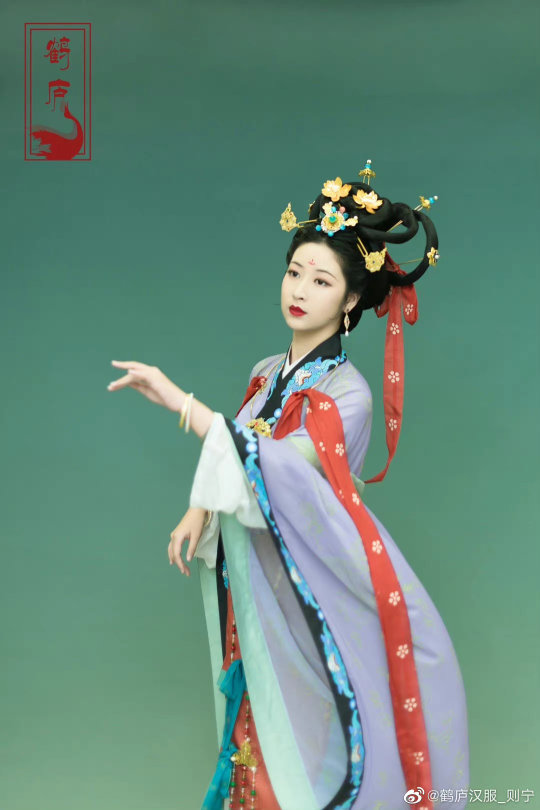
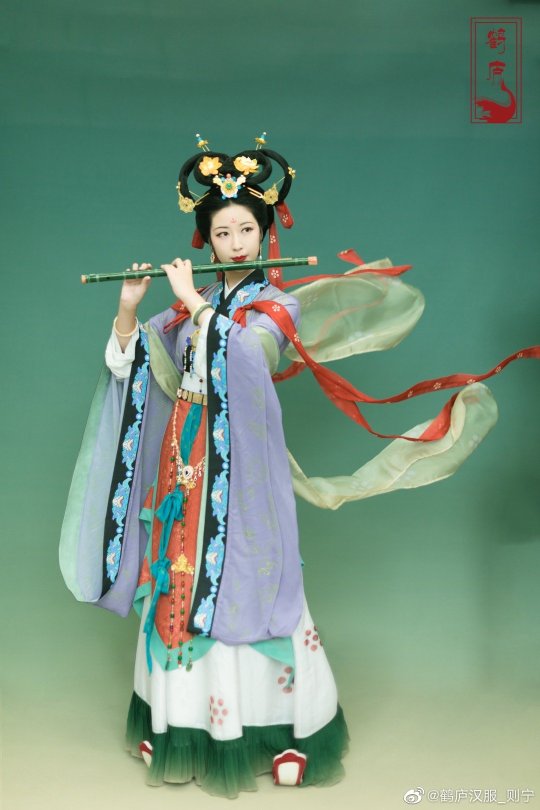
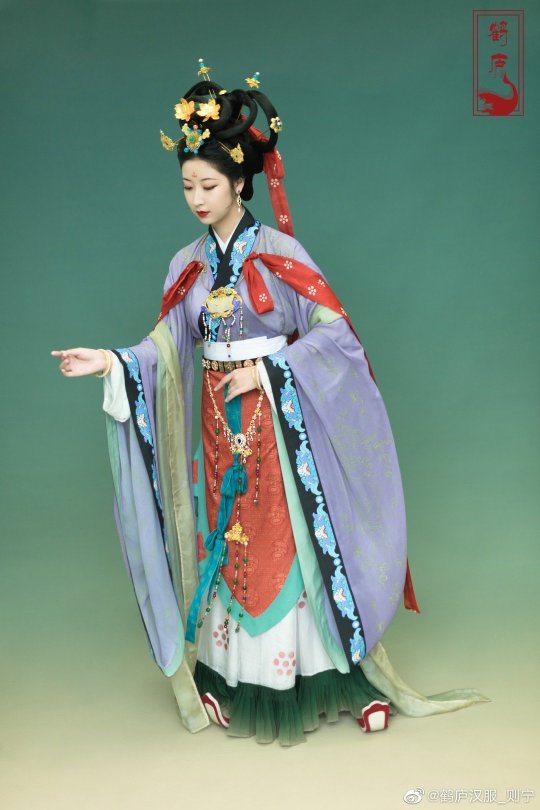
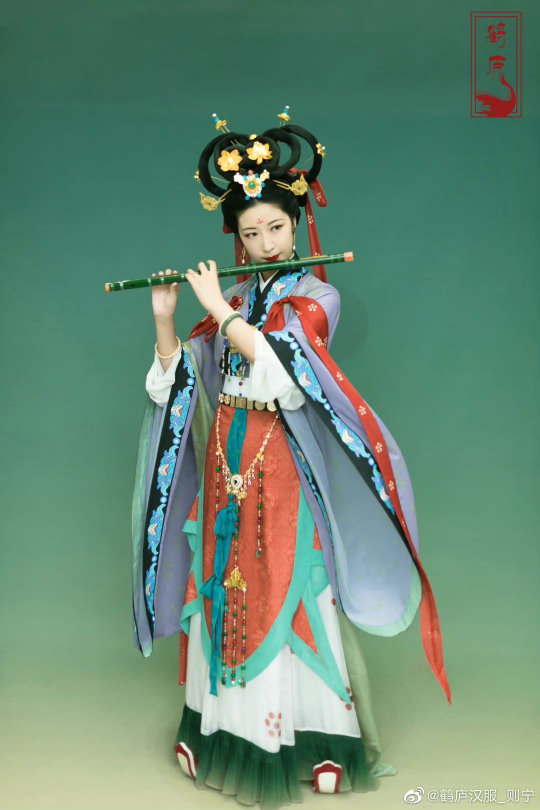

【Historical Artifact Reference】:
Tang Dynasty Painting 《八十七神仙圖/The Eighty-seven Immortals》 By 吳道子(Wu Daozi ,680-759), Wu Daozi.

[Hanfu · 漢服]Chinese Immortal Traditional Hanfu Refer to Tang Dynasty Painting 《八十七神仙圖/The Eighty-seven Immortals》
【God of the Moon in Chinese Mythology-太阴星君/Tàiyīn xīng jūn】
Yesterday(9/29) was the Mid-Autumn Festival/中秋节(Zhōngqiū jié). I believe many people have heard the story about the Goddess of the Moon-Chang'e/嫦娥.
But there is another god of the moon in Chinese mythology that not many people know - 【太阴星君/Tàiyīn xīng jūn】
Folks often think that the 太阴星君/Tàiyīn xīng jūn is Chang'e/嫦娥, but scholars usually think that she is not or that she is Chang Xi/常羲, the wife of Emperor Jun/帝俊.
Changxi (Chinese: 常羲) or Changyi (Chinese: 常儀) is a Chinese lunar goddess worshiped in the traditional Chinese pantheon. Known from ancient times, the earliest historical information on Changxi can be traced back to the Classic of Mountains and Seas (山海经). She is the wife of Di Jun(Emperor Jun/帝俊) and the mother of twelve moons.
The earliest known mention of Changxi is made in the mythic text The Canon of the Mountains and Seas, romanised as Shan-hai Ching. A single line in it reads: "The Di Jun married Changxi, who gave birth to twelve Moons
The God of the Eastern Sky Di Jun had three wives, including Changxi, who was regarded as his first wife and Xihe(羲和)'s western counterpart; while Xihe(羲和) gave birth to the ten suns, Changxi bore twelve unique moon daughters that would complete a full journey across the heavens every day. She bathed her children in a water pool. Described as an "important early goddess", her significance amongst the deities gradually waned and she was eventually "demoted to a minor position"
Together, Xihe(羲和) and Changxi (常羲)are a representation of yin yang(阴阳). Xihe and her ten suns, and Changxi and her twelve moons represent the Chinese solar and lunar calendars respectively. Changxi is often confused with fellow lunar goddess Chang'e.
————————
👩Recreation Work & Hanfu :@鹤庐汉服_则宁
🔗Weibo:https://weibo.com/2036055613/M9RFTjNk3
————————
#chinese hanfu#hanfu#hanfu accessories#God of the Moon#太阴星君/Tàiyīn xīng jūn#hanfu_challenge#Immortal#chinese traditional clothing#china#chinese#漢服#汉服#中華風#Chinese mythology#chinese art
303 notes
·
View notes
Text
Chinese Mythology: Chang'e and Hou Yi
I’m fairly sure many cultures have myths surrounding the sun and the moon, for several reasons.
Big
Round
Shiny (oooh)
Glows!
Right fucking there
China is no different! We have many myths surrounding the sun and the moon. Most famous, probably, are the two stories of Chang’e and Hou Yi.
Let’s start with Hou Yi. His story is titled Hou Yi Shoots the Suns 后羿射日, and it’s… quite literally what it sounds like.

Back in the ages before dynasties, in the times of ancient people like Great Yu (see this post for who Great Yu is) and Emperor Yao (before the Qin Dynasty started by Qin Shi Huang), there were 10 suns in the sky. These 10 suns were either 10 brother-deities or the 10 grandsons of the Jade Emperor, the head honcho up in heaven.
Man, the Jade Emperor’s family really likes to cause trouble, hmm? Just look at the Weaver Girl and Erlang Shen. No wonder the Heaven Haters boyband hates him.
The 10 suns scorched the earth, causing crops to die and the people to ask for help. Obviously having ten fucking suns shining down at you isn’t exactly great for civilisation (even the world’s best SPF can’t help you there), so Emperor Yao asks a great archer named Hou Yi to do something about it.
Hou Yi goes outside (presumably with a pair of very nice sunglasses and some top-notch sunscreen) to yell at the suns. First, he tries the diplomatic route. Basically:
Hou Yi: What the fuck are you doing? Stop scorching everyone and go home!
10 Suns: Go fuck yourself!
Hou Yi: …
Hou Yi is like, okay, well if diplomacy won’t do, I’ll just be efficient. He gets his big bow and arrow and aims up in the sky and starts to shoot every single sun out of the sky. Remember- they’re living deities, not just great balls of fire, so they can be killed. Still don’t know how a guy (even a guy as amazing as Hou Yi) manages to shoot the fucking suns out of the sky, but it’s mythology- don’t think too much about it.

Eventually he gets to the ninth sun and everyone is like “WOAH! You can stop there! We need at least one of them!”. Hou Yi is like, “do I haveeee to” and the Jade Emperor/Emperor Yao are like “YES YOU HAVE TO!”
So he leaves one of them alive, reluctantly. The last remaining sun is thoroughly terrified and resolves to stay hanging up there in the sky like a good little lamp and not make Hou Yi angry enough to shoot him down too.
That’s why the sun is in the sky. Hou Yi scares him. Everybody say thank you Hou Yi.
Hou Yi’s wife, Chang’e, is the central character in the myth behind the moon. Her myth is titled 嫦娥奔月, or Chang’e Rises to the Moon.
After Hou Yi shoots down all the suns, he’s regarded as a great hero by the people. He is rewarded with a pill of immortality or an elixir of immortality. He’s a good husband, so he decides he’s not going to drink it and leave his wife Chang’e behind, so he leaves it at home for safekeeping while he does more good deeds to hopefully get another elixir for Chang’e. Hou Yi takes in some disciples, who hope to learn his great archery skills.

One day, Hou Yi goes out hunting. One of his disciples, Feng Meng, is a big dickhead, and he resolves to steal the elixir for himself while the defenseless Chang’e is home alone without Hou Yi to protect her. He sneaks into the house and attempts to steal it. Just as he’s about to get it, Chang’e swallows it herself to protect the elixir from Feng Meng. Now immortal, she ascends up to the moon.
Chang’e is really lonely up on the moon- her only companion is the jade rabbit, or the moon rabbit. You know how Westerners see a man on the moon? Well, ancient Chinese people saw a rabbit instead- that’s the moon rabbit, now the pet of Chang'e. After Hou Yi comes back and realises what happened, he mourns Chang’e, because even though she’s immortal, the two of them can no longer be together.
He might also have killed himself, IDK exactly.

See the rabbit? I personally think it's a better theory than the man on the moon, but whatever.
In some other versions of the tale, Hou Yi is crowned king after he shoots down the suns. He becomes a brutal tyrant, and in order to prevent his total oppression of the people, Chang’e steals the elixir from him so he won’t live forever. I like to believe in the first version.
China’s space probes on the moon are called Chang’e in her honour.

This is Chang'e 5, the latest version.
The little robots that the space probes deploy are called Jade Rabbit as a nod to the myth.

This is Yutu (Jade Rabbit) moon rover!
Many of the creations of the Chinese space agency are named after myths, including the Magpie Bridge relay satellite (which you might recognise from the story of the Cowherd and the Weaver Girl!)

Also Chang’e is the inspiration behind Sailor Moon. That’s why she’s called Usagi (Rabbit).
The Mid-Autumn Moon Festival 中秋节 is one of China’s most important holidays, to celebrate the full moon and the time of the harvest. The festival honours Chang’e as we eat tangyuan (big white round sweet boiled glutinous rice balls, which look like the moon) and moon cakes (decorative round sweet cakes filled with a variety of fillings). It is said that the jade rabbit on the moon produces moon cakes to honor Chang’e. The Mid-Autumn Moon Festival is what inspired Tsukimi (Japan) and Chuseok (Korea).
#chinese culture#chinese mythology#chinese#ancient china#mythology and folklore#chang'e#hou yi#moon rabbit#mid autumn festival
17 notes
·
View notes
Text
Chinese Folk Religion: Snowy edition
Recent snow storms where I live has got me thinking: is there a deity responsible for snowfall and winter in traditional Chinese religion?
You got Frau Perchta/Holle in Germanic folklore, Yuki-Ona in Japanese Shinto folk beliefs, Skadi in Norse Paganism, and Morana in Slavic mythology, but I haven't ever heard of such a figure from my elders growing up.
So for this one, I had to actually use my limited Mandarin skills to do research, along with some help from more fluent family members and friends.
It turns out there are more than one traditional winter & snow deities in Chinese folklore. The reason I personally didn't hear of any is because, again, Chinese folk religion is extremely regional. There are central major deities that are uniform but the rest all differs from region to region. Han Chinese people have always spread out across several climate zones, from tropical to sub-arctic. Understandably, Gods and Goddesses associated with weather will differ from region to region. My Chinese side of the family hailed from a region where snowfall isn't very common, and winter isn't normally extreme. But look towards regions north of the Yellow River, and it's more upstream valleys in the Han Chinese heartland, it's a different story.
Teng'Liu: The Spirit of Snow and Frost
The first deity I can find is a figure named Teng'Liu (藤六). This is a male deity associated with snow itself. The "Liu" part if his name is the Chinese character for 6. Snowflakes typically have six arms/branches regardless of pattern. In Chinese numerology, the number 6 is also a number with "extreme Yin energy" (极阴). Snow itself is a thing with a lot of Yin energy too, as it's formed from water. Those familiar with Chinese cosmology should be familiar with the element's association with the cardinal direction of North. Which, again, is attributed with Yin. Thus explains why many forms of his folk names contains the number 6.
There is a folk ritual (which thankfully hasn't been practiced in over a century), which in Northern villages they used to offer up a young girl to this snow deity as a gift to appease him. The unfortunate girl would be tied up in a sack and left to the elements in the cold.
Teng'Liu occurs often in poetic works of literature as a stand-in for "snow". A fitting example is a work from Song dynasty writer and poet Yang Wanli, where he mentions "The Azure Lady pulls along Teng'Liu, as the Sun wilts away as she shakes (him)"** The meaning is obvious, but he mentions an Azure Lady, which takes us to another deity.
Qing'nu (青女): The Azure Lady
The second deity associated with snow and winter is a Goddess called Qing'nu, or "The Azure Lady", "The Lady in Turquoise", "The Lady in Blue", depending on the translation. She seems to be much more well-attested in ancient religious texts in addition to poetry and seems to predate the emergence of Teng'liu.
Attested in Huainanzi, a text compiled around 139 BC, "...three moons into autumn, Qing'nu emerges (from her home), and makes frost and snow fall..."
She is also mentioned as having white hair in a lot of classical Chinese poetry.
In traditional Chinese folk beliefs, Qing'nu resides in the moon and is a companion/handmaiden of the Moon Goddess Chang'E (嫦娥). Every year at the end of autumn, she will emerge from the moon palace to perform her duty: to bring winter, frost, cold, and snow. She will descend upon Mount Qing'yao (青要山), where she will bathe in the waters there to purify herself. She will then start playing her seven-stranded lyre and snow and frost will fall upon the earth to cleanse the land of impurities and diseases (until they come back next summer).
BTW Mt. Qing'yao is an actual mountain in Henan Province. The mountain itself does play a rather big role in traditional beliefs and in Taoism. In fact, there is a hill adjacent to the mountain named Qing'nu's Peak (青女峰), where on the peak there stands a pillar-like rock. In local folklore they say that lone pillar looks like a slender lady, standing atop the mountains looking down upon the earth. It marks where the Goddess herself stands every year to bring winter. The locals call it "the maiden's rock" (闺女石).
Legend has it there was once a gorgeous palace at the foot of this mountain where Qing'nu would stay in temporarily during winter. This could possibly be a reference to some type of structure used as a shrine or temple. Today only the spring that flowed in the palace remain. The very spring that, according to folklore, that the Goddess herself bathes in to purify herself. Today, young ladies from around would make pilgrimage to that spring to welcome her arrival on 14th day of the ninth month. A second pilgrimage would also be made on 13th day of the third month as she is supposed to leave and return to the moon. (the dates are the dates in the Chinese lunar calendar).
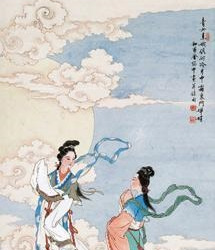
From these we can see while those deities are all associated with snow, they are seen by the people as very different. Teng'liu is very embodiment of the weather phenomenon, kind of like Jack Frost in American folklore. The fact there were rituals to appease him means that he is seen as a very unpredictable and volatile force. A spirit which has to be controlled under strict orders from a higher Celestial deity (天神): Qing'nu. Think of her as the Chinese counterpart to Frau Holle, a spirit attributed to making snow fall but not the snow itself. Or rather, think of those two like Helios and Apollo in Greco-Roman mythology. One being the sun itself and the latter being the one who pulls the sun across the sky.
This was fun, i hope all you folks who are trying to connect to their ancestral beliefs found this useful.
**translation might be off, sorry. Middle Chinese is difficult even for fluent speaker who studies old literature, plus this was Middle Chinese in it's poetic form.
#chinese folk religion#folklore#chinese folklore#history#ancestors#witchblr#witches of color#han chinese#chinese diaspora#folk taoism#chinese mythology#chinese religion#folk religion#polytheism#world religions
70 notes
·
View notes
Text
There's this one poem ive been really into by Li Shangyin and I wanna talk about it but it's kind of pointless to talk about it you can't read the original Chinese, because what's so compelling about it is specific to the original Chinese in which it's written, but for those who do know, I finally happened across Li Shangyin's "Chang'e" and it affected me so profoundly that I basically memorised it instantly. For people following along at home it goes:
雲母屏風燭影深
長河漸落曉星沉
嫦娥應悔偷靈藥
碧海青天夜夜心
And it is in particular that final couplet that manages to be devastating, in part bc li shangyin's poetry is usually so complex and metaphorical, often rendering individual lines hard to parse, it's remarkable how simple the language used here, but also the contrast of the very concrete 嫦娥應悔偷靈藥, something so straightforward it almost reads like prose, to 碧海青天夜夜心, which while simple is also so abstract, but also elegant in its own way, listing two things that are eternal and then a third which has become eternal, in a way so simply gloomy and plaintive that it elicits a shiver from me. It reminds me in a sense of the final cadence in Joaquin des Prez's Mille Regretz:
youtube
9 notes
·
View notes
Text

Remade Chang'e
8 notes
·
View notes
Text

Chang'e, chinese Goddess of the Moon.
#chinese mythology#goddess of the moon#chang'e#嫦娥#Heng'e#姮娥#yu tu#Moon Rabbit#廣寒宮#a.i.#artificial intelligence#a.i. generated#a.i. art
2 notes
·
View notes
Text




Chang'e | 嫦娥
» Mid-Autumn 2023 «
An interpretation of Chang'e for Mid-Autumn Festival :> And also a modification on Sea Calling who's original palette I was always unsure on.
Head: Rakshasa Kanmuri of Casting - default Body: Ivalician Oracle's Coat - default Hands: Moonward Armlets of Casting - storm blue Legs: Classical Signifer's Culottes - pearl white Feet: Faerie Tale Princess's Heels - storm blue
Alt Feet: Palaka Pumps of Casting
Earring: Augmented Credendum Earrings of Casting Neck: The Last Necklace of Casting Wrists: The Emperor's New Bracelet Right Ring: Augmented Lunar Envoy's Ring of Casting Left Ring: Augmented Lunar Envoy's Ring of Casting
Main Hand: Augmented Lunar Envoy's Staff - storm blue Off Hand: --
Fashion Accessory: -- Minion: Unlucky Rabbit Location: #posystudio - Dynamis/Marilith Lavender Beds W14 P8
Shader: Faeberry Bloom
#ffxiv#ffxiv glamour#ffxiv au ra#ffxiv black mage#eorzea collection#posystudio#valkariel ilmarë#au ra#raen#black mage#casters#lights/whites/pastels#blues/indigos#golds/yellows#uses mogstation items#no seasonal items#eastern glamour#divine glamour#fantasy glamour
25 notes
·
View notes
Text
On this day in Wikipedia: Wednesday, 3rd January
Welcome, ongi etorri, hoş geldiniz, benvenuto 🤗 What does @Wikipedia say about 3rd January through the years 🏛️📜🗓️?

3rd January 2023 🗓️ : Event - Jurong Bird Park Singapore's Jurong Bird Park permanently closes. "Jurong Bird Park was formerly an aviary and tourist attraction in Jurong, Singapore between 1971 and 2023. The largest such bird park in Asia, it covers an area of 0.2 square kilometres (49 acres) on the western slope of Jurong Hill, the highest point in the Jurong region. It was one of the parks..."

Image licensed under CC BY 2.0? by aamanatullah
3rd January 2019 🗓️ : Event - Chang'e 4 Chang'e 4 makes the first soft landing on the far side of the Moon, deploying the Yutu-2 lunar rover. "Chang'e 4 (; Chinese: 嫦娥四号; pinyin: Cháng'é Sìhào; lit. 'Chang'e No. 4') is a robotic spacecraft mission in the Chinese Lunar Exploration Program of the CNSA. China achieved humanity's first soft landing on the far side of the Moon with its touchdown on 3 January 2019.A communication relay..."
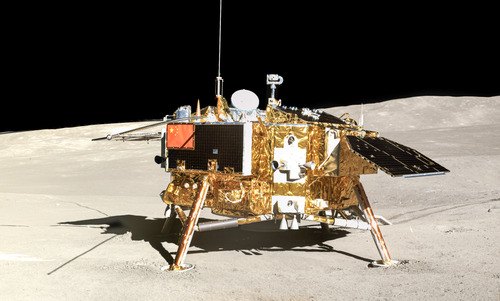
Image licensed under CC BY 2.0? by CSNA/Siyu Zhang/Kevin M. Gill
3rd January 2014 🗓️ : Death - Phil Everly Phil Everly, American singer and guitarist (b. 1939) "Phillip Everly (January 19, 1939 – January 3, 2014) was an American musician, who was one half of the duo The Everly Brothers alongside his older brother Don. ..."

Image by Bruno of Hollywood
3rd January 1974 🗓️ : Birth - Todd Warriner Todd Warriner, Canadian ice hockey player "Todd Eaton Warriner (born January 3, 1974) is a Canadian former professional ice hockey forward. Over the course of his career, Warriner played for the Toronto Maple Leafs, Tampa Bay Lightning, Phoenix Coyotes, Vancouver Canucks, Philadelphia Flyers, and Nashville Predators of the NHL. He also..."
3rd January 1924 🗓️ : Birth - André Franquin André Franquin, Belgian author and illustrator (d. 1997) "André Franquin (French: [fʁɑ̃kɛ̃]; 3 January 1924 – 5 January 1997) was an influential Belgian comics artist, whose best-known creations are Gaston and Marsupilami. He also produced the Spirou et Fantasio comic strip from 1946 to 1968, a period seen by many as the series' golden age...."

Image licensed under CC0? by Fotopersbureau De Boer
3rd January 1819 🗓️ : Birth - Charles Piazzi Smyth Charles Piazzi Smyth, Italian-Scottish astronomer and academic (d. 1900) "Charles Piazzi Smyth (3 January 1819 – 21 February 1900) was an Italian-born British astronomer who was Astronomer Royal for Scotland from 1846 to 1888; he is known for many innovations in astronomy and, along with his wife Jessica Duncan Piazzi Smyth, his pyramidological and metrological studies..."

Image by John Faed
3rd January 🗓️ : Holiday - Christian feast day: Kuriakose Elias Chavara (Syro-Malabar Catholic Church) "Kuriakose Elias Chavara, CMI (10 February 1805 – 3 January 1871) was an Indian Syro-Malabar Catholic priest, religious, philosopher and social reformer. He is the first canonised Catholic male saint of Indian origin and a member of the Syro-Malabar Church, an Eastern Catholic church. He was the..."
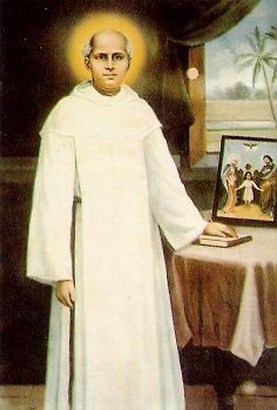
Image by zeitgenössischer Künstler
0 notes
Text







Chinese hanfu of moon goddess chang'e嫦娥 who lives in guanghangong广寒宫/ guanghan palace (meaning the cold and spacious palace) on the moon. The styling and makeup are often inspired by the chang'e from the costume drama journey to the west (1986 version) and referenced classic chinese paintings. Chang'e flying to the moon is a household story in china. That's why China named its lunar probe series chang'e.
In addtition to chang'e, the looks of yutu玉兔/jade rabbit and guihuajing桂花精/sweet osmanthus spirit are also popular choices for chinese hanfu on mid-autumn festival. Jade rabbit is the pet of chang'e who makes 长生不老药chang sheng bu lao yao/elixir by grinding and smashing herbs every day, and if one takes the elixir, one'll live forever and become immortal (that's the story of yu tu dao yao玉兔捣药/jade rabbit grinding herbs). And guihuajing/sweet osmanthus spirit involves another story about the moon, wu gang fa gui吴刚伐桂/wu gang chopping osmanthus tree.
Wu Gang is a man who wants to learn the secret of immortality but doesn't want to put in the effort. His laziness angers the Jade Emperor, who punishes him by sending him to the moon palace to cut down the osmanthus tree every day, and he can go back to the earthly world when he's finished. It turns out that every time he cuts down the tree, the osmanthus tree automatically recovers its original shape, so wu gang's work will never be finished. According to the story, he cuts down the tree to this day, as a neighbor of chang'e. So his desire to live immortal was realized in an outrageous way lmao (the wisdom of jade emperor). However the chinese myths never says how wu gang and chang'e were related or how they get along, if they ever chatted or anything like that. We only know they are neighbors.
It's funny that no one has ever dressed up as wu gang on the zhongqiu/Mid-Autumn Festival, probably because he doesn't have a specific image or people think he is nobody and don't care about him, and I think it would be especially fun if someone dressed up as a wu gang standing next to chang'e holding an axe as her bodyguard.
In short, yutu and guihuajing are often represented with elements of bunny, osmanthus flowers, and mooncakes respectively, and the colors are usually sunrise orange or bright yellow, many with a distinct xianxia仙侠 style. There are also some historical styles as well.
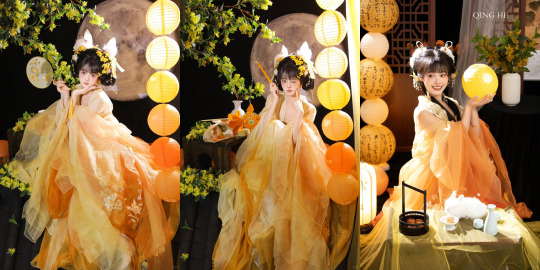







#china#hanfu#chinese hanfu#fashion#chinese fashion#reference#mid-autumn festival#zhongqiu#september 17 is the day of zhongqiu in china this year according to chinese calendar
370 notes
·
View notes